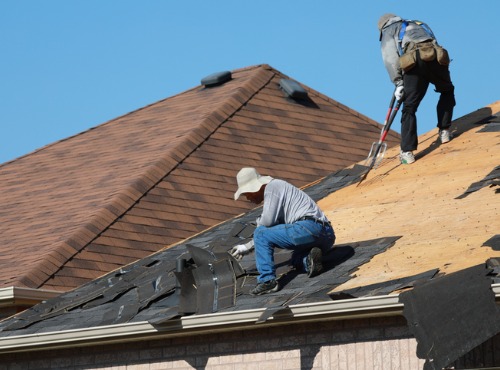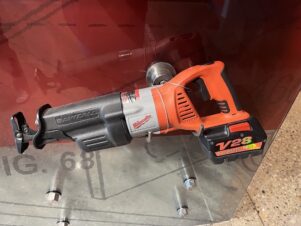Your home’s roof is a critical shield against the elements, embodying the safety and integrity of the entire structure. A resilient roof protects against weather extremes but over time, it may also face challenges like moss growth, which can compromise its durability and aesthetics. Ensure the longevity of your roof by considering a professional moss removal service to maintain its strength and appearance, and contribute significantly to your home’s overall energy efficiency and longevity. Maintaining and enhancing your roof’s resilience is critical to safeguarding your home and maximizing your investment.
Choosing suitable materials, ensuring professional installation, and committing to regular maintenance are the pillars of a long-lasting roof. This guide aims to provide you with actionable insights and knowledge, empowering you to make informed decisions that extend the life of your roof and improve your home’s performance.

Initial Considerations: Understanding Roof Lifespan and Material Choices
The lifespan of your roof is greatly influenced by the materials you choose. From traditional asphalt shingles to durable metal or elegant slate, each option has a specific lifespan, aesthetic appeal, and maintenance requirements. Understanding the pros and cons of each material, alongside factors like your local climate and the roof’s exposure to the elements, is crucial in making a choice that balances cost, appearance, and longevity.
However, material choice is just the beginning. The actual lifespan of your roof also hinges on other critical factors, such as the quality of installation, the regularity of maintenance, and even the architectural design of your roof. By considering all these aspects, homeowners can set realistic expectations and plan effectively for the future of their roofing system.
Professional Installation: Laying the Foundation for Roof Longevity
The installation of your roof is crucial for its future resilience. Professional, high-quality installation prevents numerous issues, particularly with metal roofing, known for its durability, energy efficiency, and low maintenance. Expert installation from a reputable metal roofing company ensures the material is optimized for your climate, extending the roof’s life and performance. Choosing a qualified, experienced roofing contractor is vital in this process.
When selecting a contractor, ask for references, proof of insurance, and detailed quotes. A professional should offer a warranty, showcasing their confidence. Specifically, contractors with a track record in this area can maximize the benefits of longevity, weather resistance, and energy efficiency for metal roofing. A properly installed metal roof is more than a cost; it’s a long-term investment in your home’s safety and efficiency, ensuring durability and peace of mind.
Routine Inspections: The Key to Early Detection
Regular inspections are the cornerstone of roof maintenance. By identifying and addressing issues early, homeowners can prevent minor problems from escalating into major, costly repairs. Ideally, inspections should occur twice a year and after any severe weather events. Look for signs of wear, such as cracked or missing shingles, damaged flashing, or excessive granule loss.
But inspections aren’t just about spotting damage. They also offer an opportunity to clear debris, clean gutters, and ensure that vents and chimneys are sealed and functioning correctly. Consistent attention to these details can significantly extend the life of your roof and maintain its optimal performance.
Comprehensive Maintenance: Protecting Your Investment
Beyond inspections, comprehensive roof maintenance involves a series of regular tasks tailored to the roof’s material and the home’s surrounding environment. This includes cleaning gutters to prevent water backup, removing overhanging branches that can scratch or gouge roofing materials, and ensuring proper attic ventilation to prevent moisture buildup and heat accumulation.
Maintenance also means being proactive about repairs. Addressing minor issues can prevent more significant, more expensive problems. Whether replacing a few damaged shingles or resealing a leaky vent, timely interventions can significantly extend the lifespan and effectiveness of your roof.
Navigating Environmental Challenges: Adapting to Climate and Nature
Environmental factors play a significant role in the health and longevity of your roof. Sun exposure, wind, rain, snow, and nearby foliage can all impact your roofing material differently. For instance, areas with heavy snowfall require roofs capable of bearing significant weight, while homes in hurricane-prone regions need roofing systems to withstand high winds.
Choosing materials and maintenance strategies suited to your specific climate is essential to protect your roof from these elements. This might mean selecting reflective materials for hot, sunny climates or ensuring proper insulation and snow removal in colder regions. Understanding and adapting to these environmental challenges is key to maintaining a resilient roof.
Repair or Replace: Making Informed Decisions
Knowing whether to repair or replace your roof is crucial to maintaining its resilience. Frequent, minor repairs can extend the life of a roof, but there comes a point when the cost and effort of ongoing maintenance outweigh the benefits. Signs that your roof may need replacing include widespread damage, persistent leaks, or the roofing material’s age nearing its expected lifespan.
This decision requires carefully evaluating the roof’s current condition, the potential longevity of repairs versus replacement, and the costs involved. Consulting with a professional roofing contractor can provide valuable insights and help you make an informed, cost-effective decision about the future of your roof.
Embracing Innovations: Future-Proofing Your Roof
As the roofing industry evolves, so do the materials and techniques available to homeowners. Innovations like cool roofing, green roofs, and advanced shingle technology offer enhanced durability, energy efficiency, and environmental benefits. These new options can make your roof more resistant to extreme weather and more energy-efficient or even turn it into a living ecosystem.
Staying informed about these advancements and considering them in roofing can provide long-term benefits. Whether you’re repairing, replacing, or simply looking to improve your roof’s performance, exploring these innovative options can help you future-proof your home against whatever challenges lie ahead.
Conclusion
Investing in your roof’s resilience is a proactive step towards safeguarding your home, reducing future expenses, and enhancing your living environment. By understanding the factors contributing to a roof’s longevity, committing to regular maintenance, and staying informed about the latest innovations, homeowners can ensure their roofs remain robust and effective for years.




Join the conversation: